How to protect people and places from landslides in Switzerland
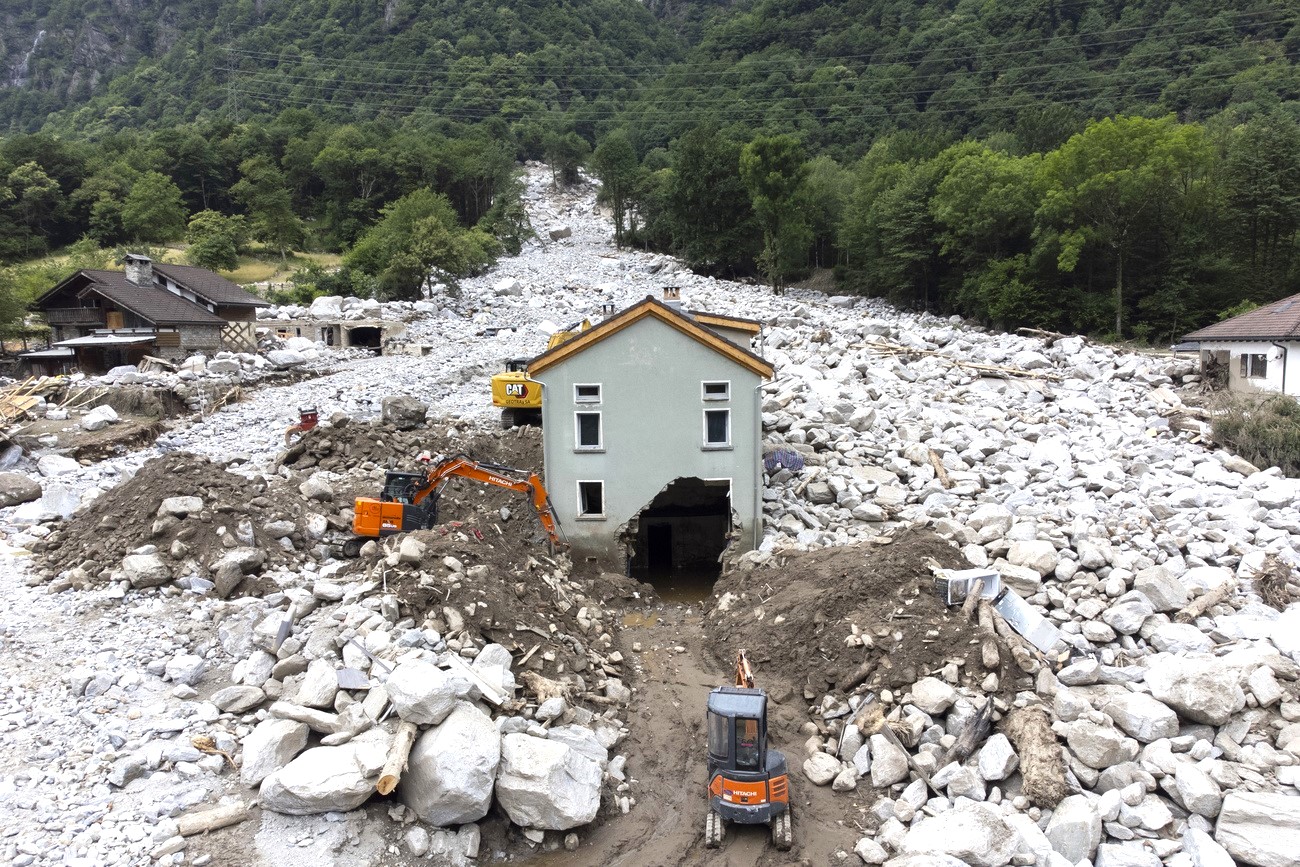
The recent landslides in Switzerland caused deaths and extensive damage. Alarm systems and protective barriers can help, but more drastic solutions are being suggested for the growing risk of natural disasters.
Homes and communication links destroyed, Alpine communities cut off, at least 12 people killed or missing – that was the consequences of the extreme weather that struck southern Graubünden, Ticino and Valais in the second half of June and early July.
Heavy rains filled rivers, resulting in floods. But they also set in motion loose debris on the mountain slopes, which in turn caused landslides of mud, earth and rocks. These so-called debris flows are both highly destructive and hard to predict.
“Debris flows are very dangerous because they can throw down huge piles of sediment at high speed,” Brian McArdell, a specialist in mountain hydrology and landslides at the Federal Institute for Forest, Snow and Landscape Research (WSL) told SWI swissinfo.ch.
The following video shows the damage caused by debris flows in Switzerland this summer:
The detritus usually accumulates in the bed of a mountain stream or in a gorge with a slope greater than 25%. However, it is almost impossible to tell where exactly the landslides are going to occur.
“In general, we don’t know how much debris may be present in a mountain stream, and how much of it is likely to start moving if there is heavy rain,” McArdell said.
These debris flows are of direct concern to about 70 countriesExternal link around the world. In Switzerland, they can occur over much of the national territory, as can be seen from the mapExternal link put out by the Federal Office for the Environment. In the Alps they can result in the fall of half a million cubic metres of debrisExternal link, and every year they cause on average CHF100 million ($113 million) worth of damage.
+ An Alpine village on the frontline of climate change
Global warming is likely to increase the number of extreme precipitation events and bring a greater risk of landslides, according to the WSL. “To prevent them is going to be very difficult,” McArdell admitted.
So it will be essential to take action to protect populations and infrastructure better, especially in the areas already affected or most at risk. There are essentially two solutions: early warning systems, and human-made barriers to break the fall of debris.
Anticipating a debris flow with AI
Alarm systems can alert authorities to a possible debris flow or detect the movement of debris when it’s already happening.
In the first case, the systems are based essentially on the quantity of rainfall. This approach has the advantage of alerting first responders such as firefighters and police, explained Alexandre Badoux, another expert on debris flows at the WSL. “It’s not always the best solution for the local population, however,” he said.
“There is a problem with false alarms: we know that local people find it hard to put up with them”
Alexandre Badoux, expert on debris flows
The mountain streams and gorges that produce these debris flows don’t all react the same way to heavy rainfall. So it’s hard to pinpoint a threshold of precipitation which would trigger an alarm for a whole region. “There is a problem with false alarms: we know that local people find it hard to put up with them,” Badoux added.
The other kind of system used here detects a debris flow as it happens using instrumentation located in the bed of the mountain stream or on the banks. There are metal pipes that break open with the passage of the debris, while more sophisticated devices (sensors) capture waves passing through the ground.
This also has a drawback: once the debris flow starts rumbling down the mountain, there is usually little time left to sound the alarm. To gain a few precious minutes even, researchers at the federal technology institute ETH Zurich and the WSL have developed an alarm system based on artificial intelligence (AI).
Sensors usually used for earthquakes register the vibrations caused by moving detritus while it is still several kilometres away. The algorithm, which has been trained on data from previous landslides, is able to distinguish the movement of debris from vibrations caused by railway traffic or herds of cows on the move, say.
This device was tested successfullyExternal link in 2020 in a mountain stream in the Illgraben valley, in canton Valais, and the advance warning time was increased by 20 minutes.
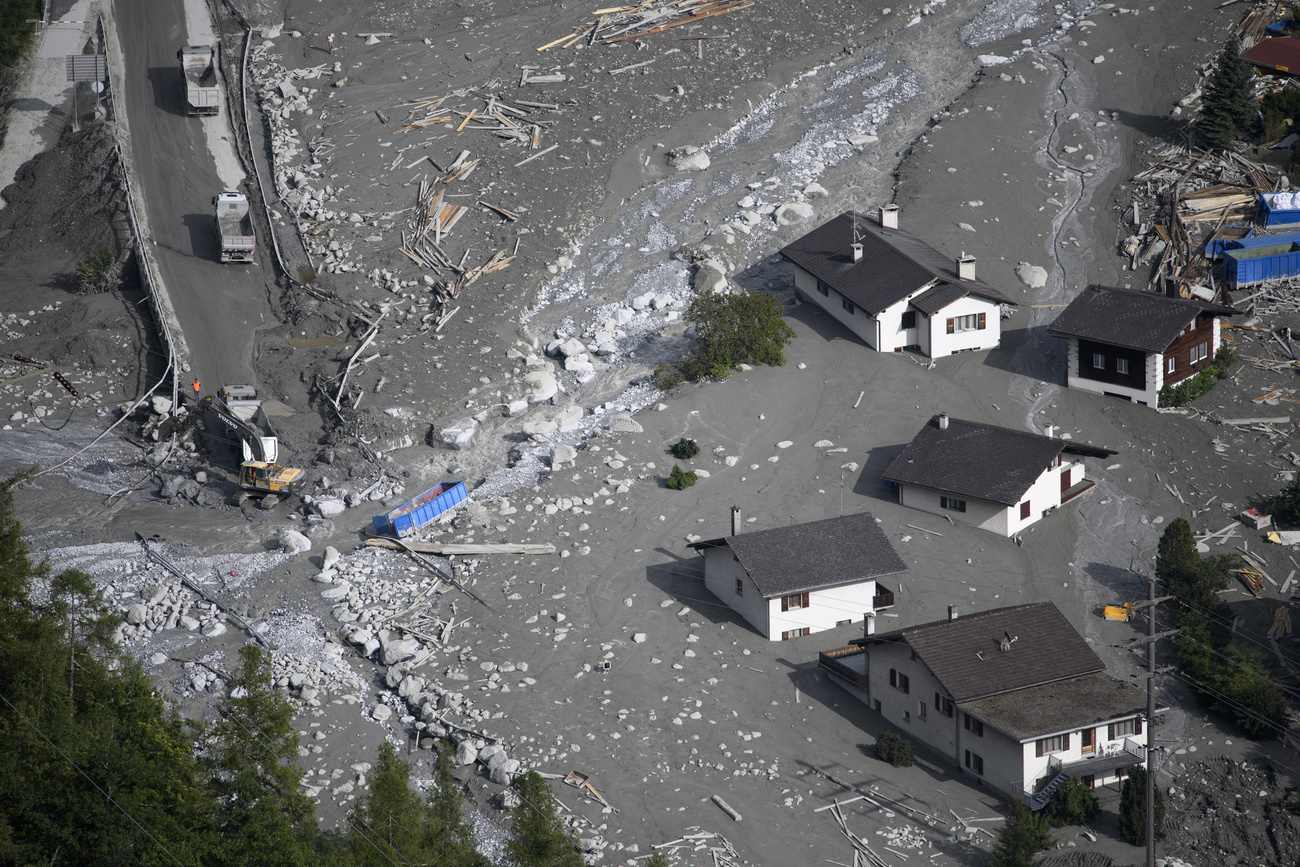
More
The deadliest landslides in Swiss history
Steel nets to shield housing and infrastructure
“Alarm systems can protect people and save lives,” says Badoux. “Yet they can’t prevent damage to infrastructure.”
Reinforced concrete walls and embankments can protect housing and infrastructure from landslides, but they are expensive to build and take up a great deal of space.
Steel net barriers, which have been used for a long time to hold back avalanches or mudslides, are a more economic alternative. They can be installed quickly in a mountain stream or a gorge as a first-step solution or to protect a single road or a single building. Since 2007 over 110External link of these have been installed in Switzerland.
The steel net holds back the solid debris of the landslide and lets through water and mud. “We use high resistance steel wire, the same kind that’s used to carry cable-cars up a mountain,” explained Isacco Toffoletto, an engineer with Geobrugg, a leading firm in the field of protection systems against natural hazards.
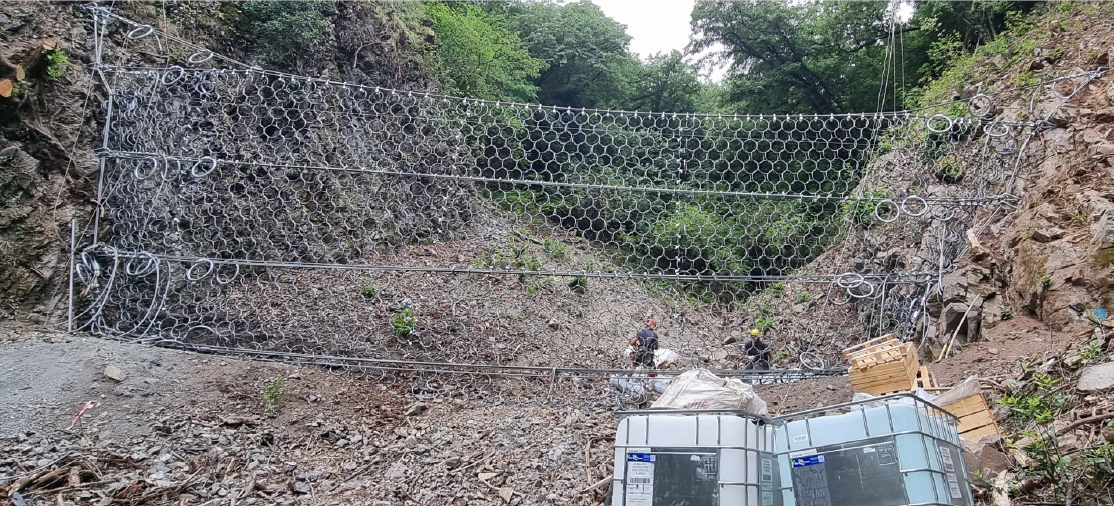
But like alarm systems, the steel netting has its limits. This approach makes most sense in places where debris flows occur only rarely, Badoux said. “Otherwise, you have to keep cleaning the accumulated debris out of them, which is a very expensive business.”
A further kind of protection against debris flows is using catchment basins. They can collect large quantities of debris, but they need a wide surface.
Abandon the Alpine valleys most at risk?
With increasing risk of natural disasters due to global warming, protecting Alpine settlements and infrastructure will be an ever-growing challenge. In 2022, the federal government, cantons and local governments invested some CHF600 millionExternal link in protection against natural hazards.
For Reinhard Steuer, a professor of climate policy at the University of Natural Resources and Life Sciences (BOKU) in Vienna, drastic solutions are called for.
Damage from flooding and landslides of the kind seen in Switzerland this summer can be fixed, “but if it happens two or three times in a sparsely populated area, reconstruction becomes hard to justify from a socio-economic point of view,” he told the Neue Zürcher ZeitungExternal link (NZZ). By the end of the century, he maintains, some of the most exposed Alpine valleys will need to be abandoned to some extent.
In Carmelia Maissen’s view, this is a “cynical and short-term vision”. Maissen chairs the Conference of Governments of Alpine Cantons. Although there might be particular instances of resettlement, there is no question of abandoning whole valleys, she told the NZZExternal link. The need now is to analyse what happened in the affected areas and identify where the weak points are, taking into account climate change factors.
For Badoux, the first step is to understand the factors that caused these destructive landslides. This will help them update the map of natural hazards and hopefully redefine the high-risk locations.
This may be the only positive aspect of the tragedies that hit Swiss villages in recent weeks: that they help to avoid fatalities and damage in future.
Edited by Sabrina Weiss. Adapted from Italian by Terence MacNamee/ts

In compliance with the JTI standards
More: SWI swissinfo.ch certified by the Journalism Trust Initiative










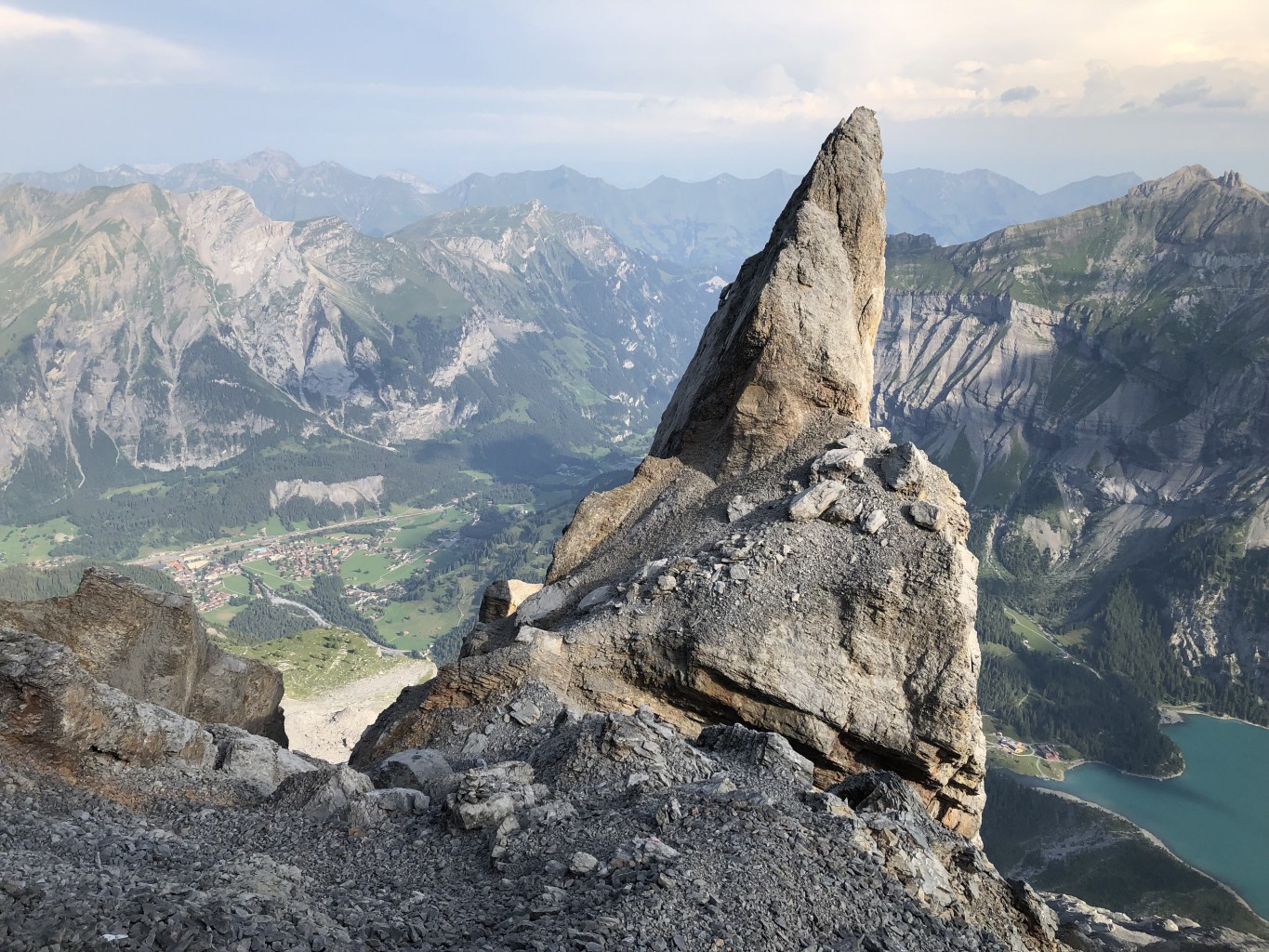

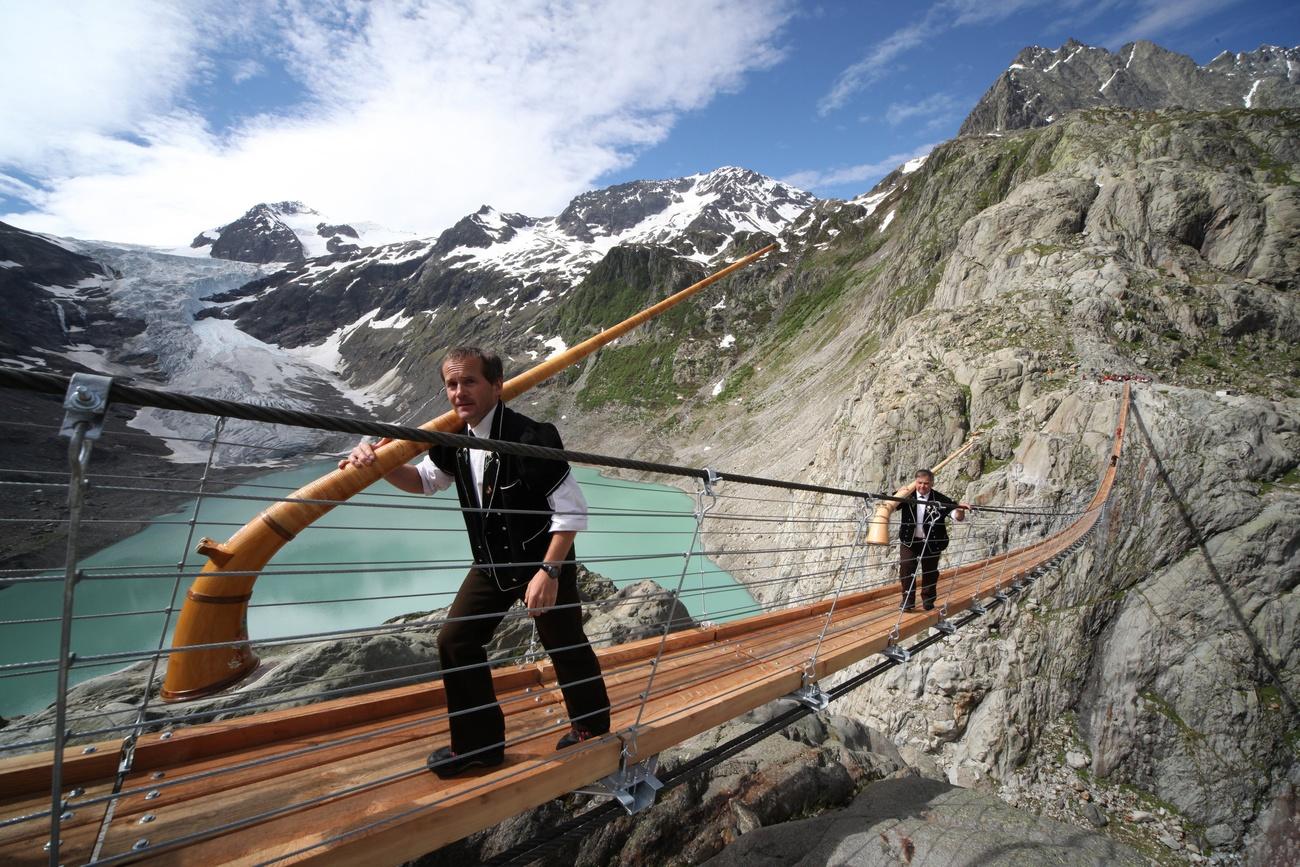
You can find an overview of ongoing debates with our journalists here . Please join us!
If you want to start a conversation about a topic raised in this article or want to report factual errors, email us at english@swissinfo.ch.